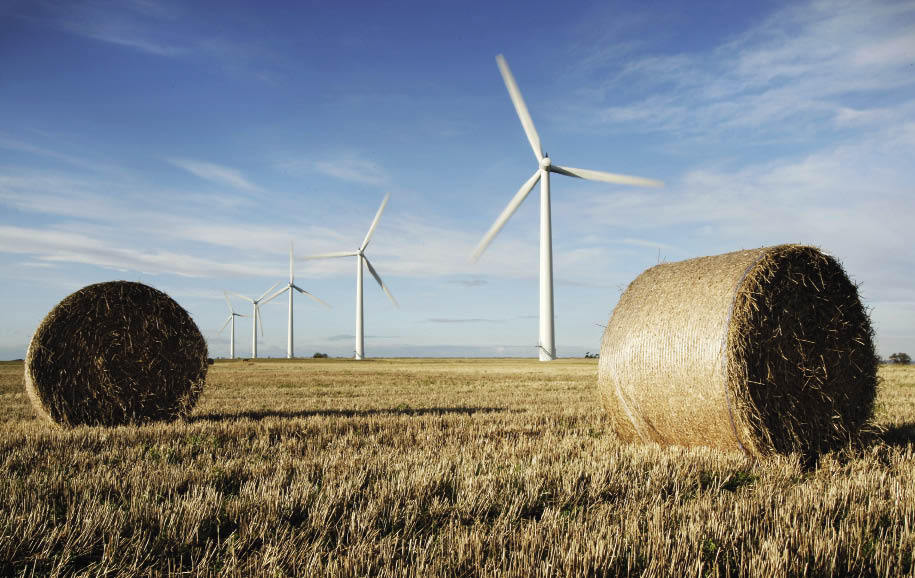Unaffordable and unsustainable, Rupert Darwall explains why Labour’s worst stealth tax must be abolished
The bubble has burst; there are no proceeds of growth to share and Britain’s budget deficit is, in the words of one central banker, truly frightening. Can Mr Cameron give voters a break, one which will leave them tangibly better off and is unambiguously good for the economy? Yes he can.
The Renewables Obligation can claim to be Labour’s worst stealth tax. Unlike VAT, it is bundled into people’s electricity and gas bills without them knowing how much it costs. The money it raises is then spent with minimal accountability or regard for value for money. Since its introduction in 2002, the Renewables Obligation has cost consumers and businesses £4.4 billion. By 2027, when it is was originally planned to end, it will cost all of us a further £28 billion. It is now intended to run until 2037, so this figure, already breathtaking, will grow enormously — no one knows by how much.
What are consumers getting in return for being forced to pay an extra 14 per cent for electricity and around 3 per cent for gas in environmental levies? Answer — lots of wind farms producing some of the world’s most expensive electricity. According to the Department of Energy and Climate Change, in 2008 the UK’s onshore wind farms had a load factor — the proportion of time wind farms generate electricity at their theoretical output — of less than 30 per cent (the five offshore farms were slightly better at 35 per cent). Consumers don’t just pay for the wind farms. They also pay for the back-up capacity when there is too little wind, and will fund special grid services to cope when there is too much.
OK, you say, but wind farms are needed to save the planet. The trouble is, before they do that, they will have bankrupted us. Wind farms are spectacularly bad at reducing carbon emissions. According to a 2006 study by Ofgem, the energy regulator, the cost to consumers of carbon abatement through the Renewables Obligation is between £154 and £481 per tonne of carbon dioxide, depending on what fuel is displaced by wind. Even the lower figure is a multiple of estimates of the social cost of carbon dioxide. These range from £4.54 a tonne by America’s leading climate economist William Nordhaus to £26 a tonne in the Stern report, which, to paraphrase the Butler report on the intelligence on Iraqi WMD, stretched the scientific literature to its outer limits.
The Renewables Obligation is not green. According to Dr John Constable, policy director of the Renewable Energy Foundation, the distortions it creates make it very likely that to keep the lights on, a future government will have to prolong the life of older coal- and oil-fired power stations. Dr Constable argues that Britain will end up in the worst of all possible worlds. ‘We will have dirtier electricity in 2020 and less sustainable organic growth in renewables than we would have had if the government had kept its clunking fist out of the market.’
There is no objective case for the Renewables Obligation. So why are consumers being fleeced? Its social and economic value is less than the scam in Gogol’s Dead Souls, in which Chichikov attempts to buy the ownership rights for deceased serfs to inflate his apparent wealth. It certainly meets the New Labour criterion of being ‘intensely relaxed about people getting filthy rich’, as Peter Mandelson once put it. The huge subsidies being poured down the throats of wind farm developers generate returns which are, in Dr Constable’s words, ‘beyond the dreams of avarice’.
What of the politics? The distortions created by the Renewables Obligation, the new Feed-In Tariffs and the Renewable Heat Obligation mean current policy is unaffordable and unsustainable. At some point, it will collapse. The Conservatives have a choice. They can wait for this to happen and get blamed for the ensuing mess. Or they can go on the front foot. How hard is it to sell to voters an immediate cut in fuel bills — and avoid a doubling of fuel bills in ten years’ time?
Rupert Darwall’s book, Global Warming: A Short History is being published by Quartet later this year.






Comments